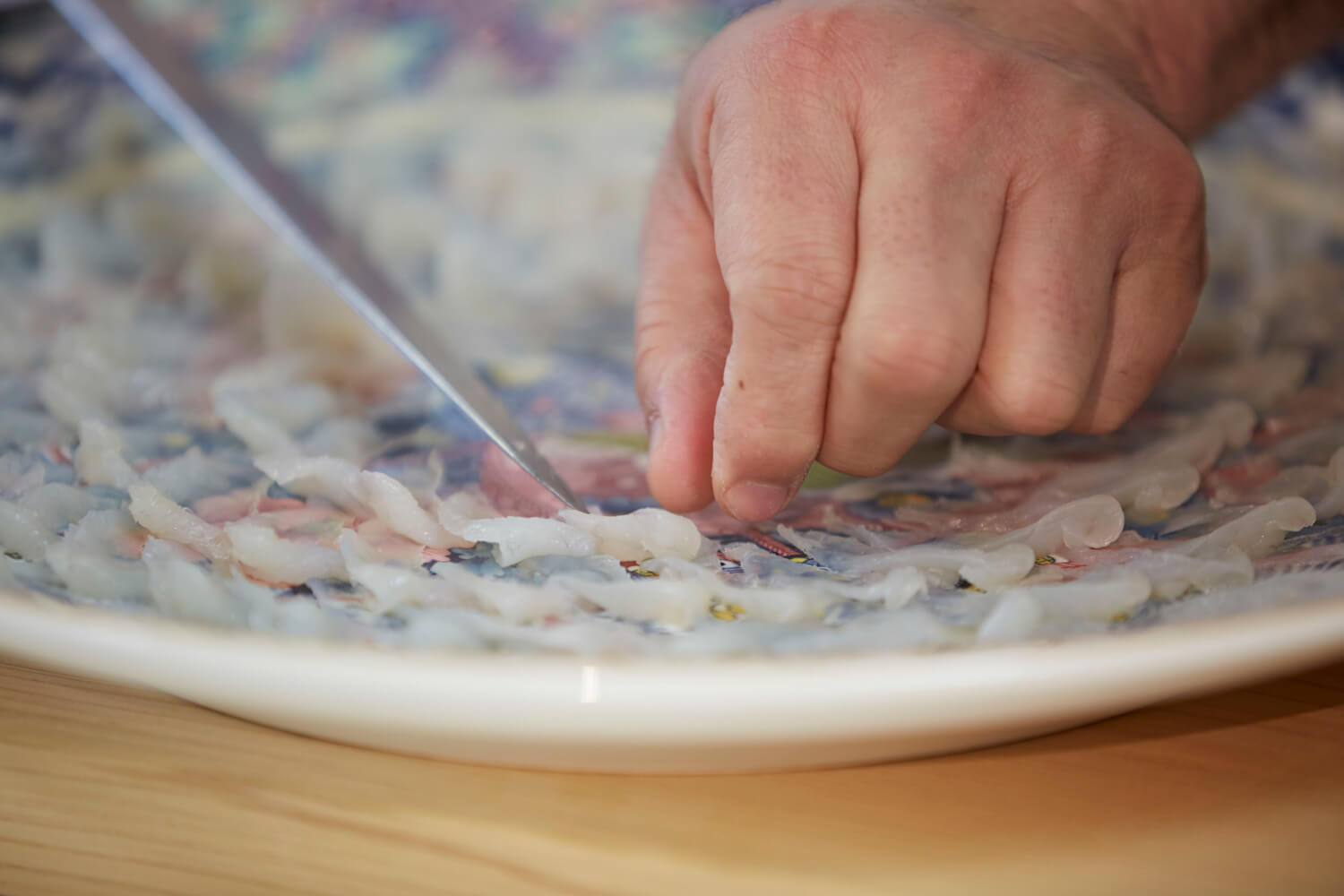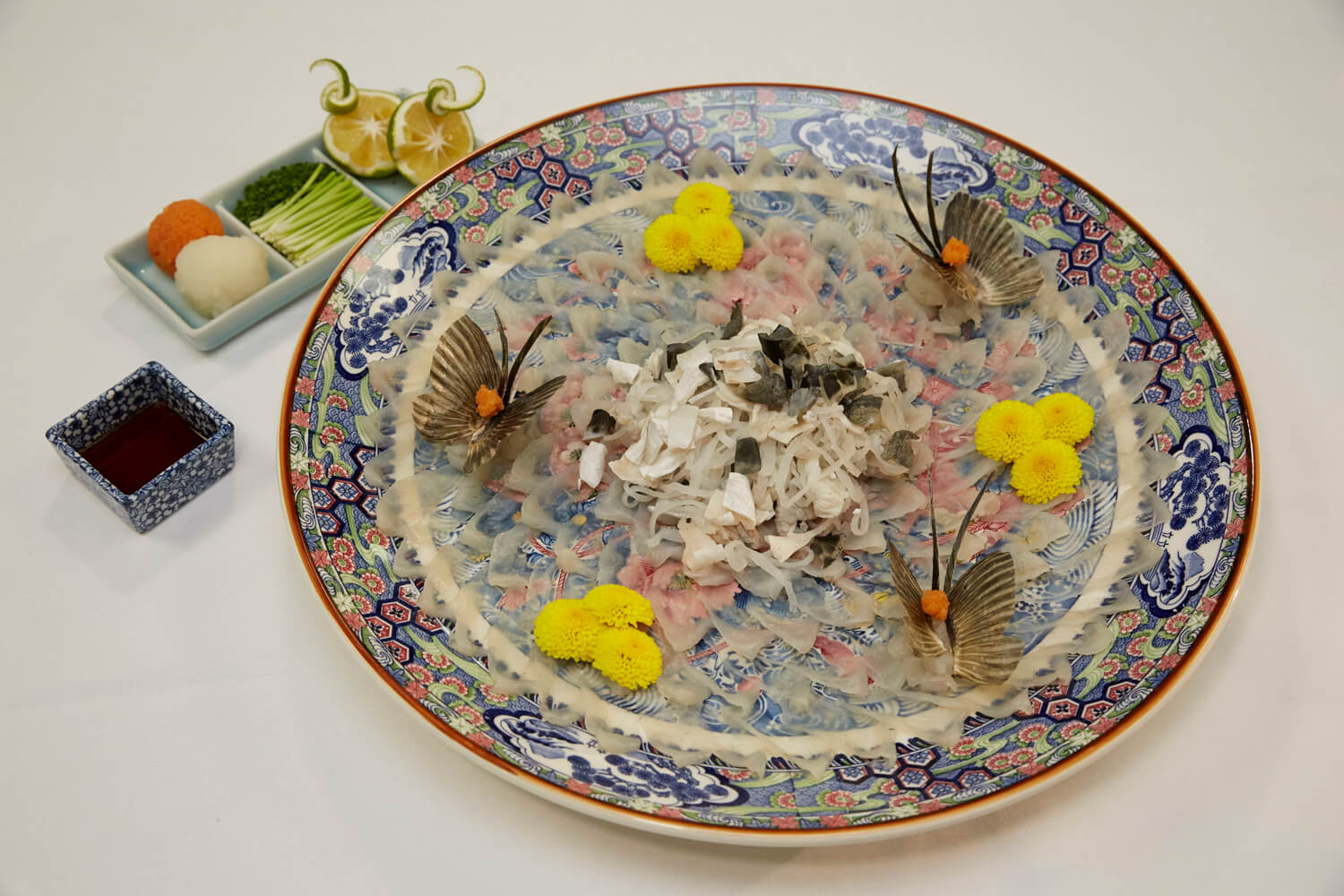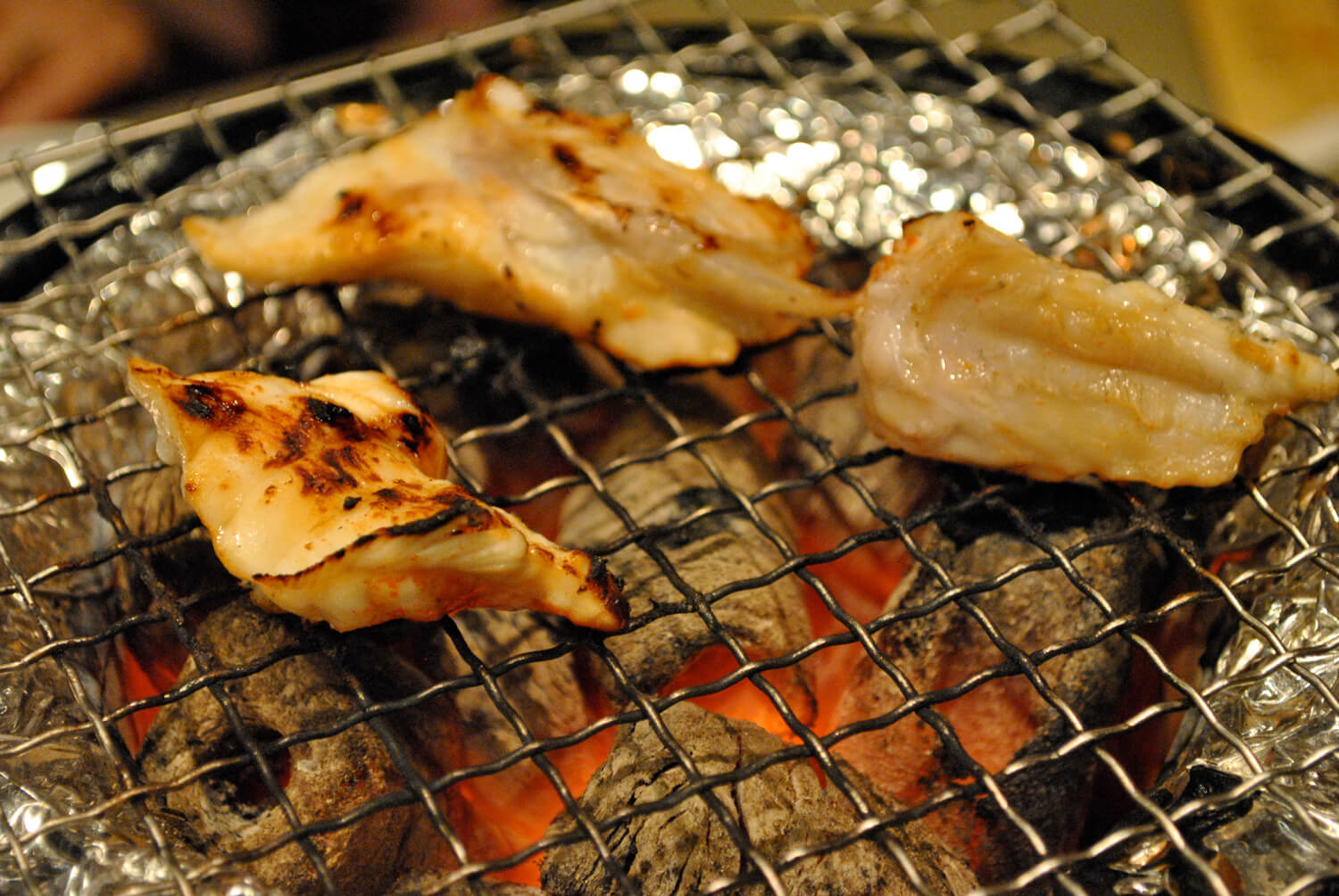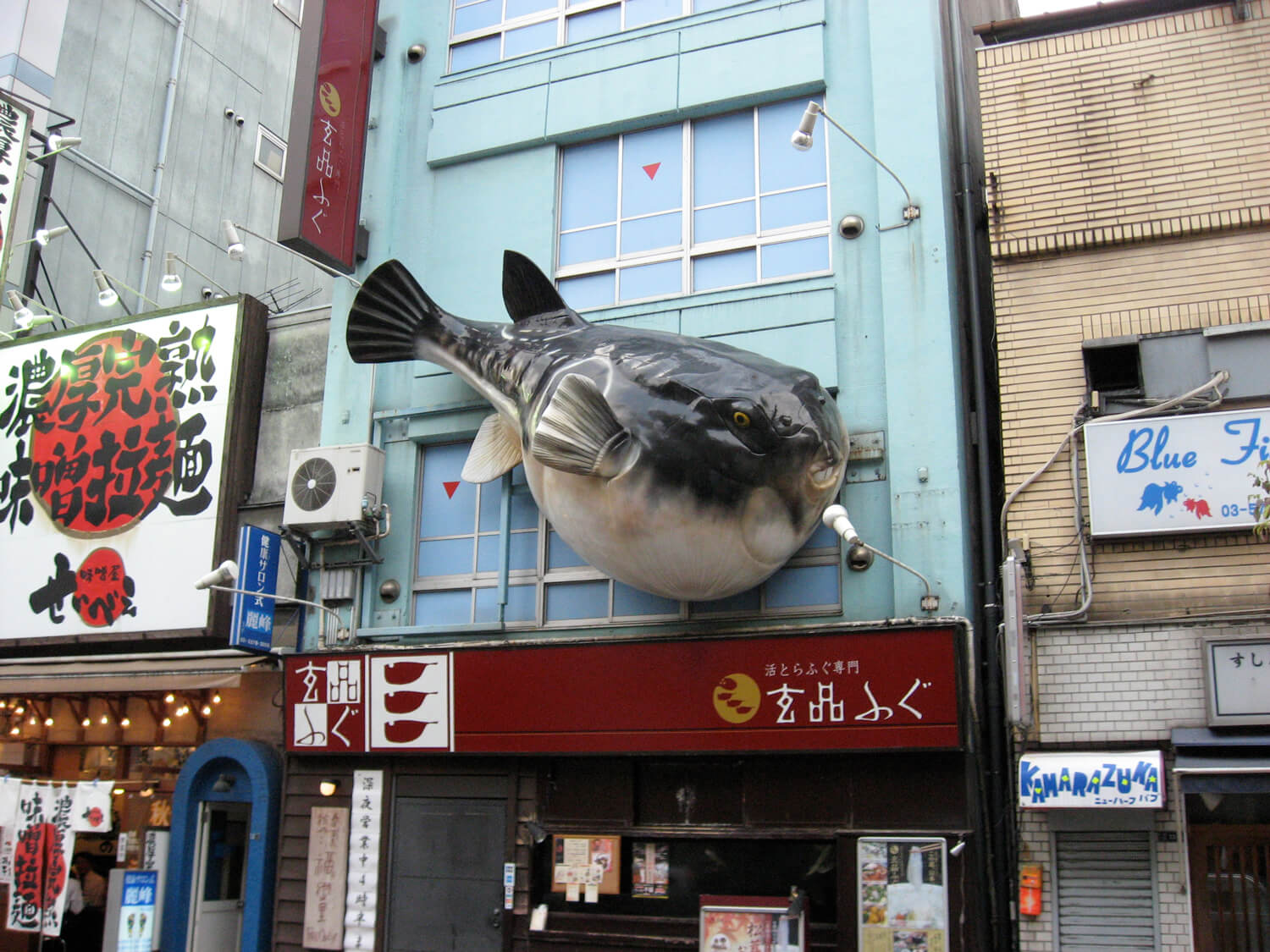Potentially Toxic, the Fugu Has Become the Pride of Japanese Gastronomy

©spaztacular
A more rarified dish than a ramen, fugu is nonetheless one of the most notorious Japanese foods. Once known as the Russian Roulette of gastronomy, this fish, reputed for its delicate flesh, is best known for its high levels of tetrodoxin, a potent neurotoxin 1200 times more powerful than cyanide for which there is no antidote. Commonly known as the pufferfish as it swells up by ingesting large quantities of water in the face of the slightest threat, the fugu has been consumed in Japan since the Jomon period (10,000 to 300 BC). However it was forbidden under Shogun order between 1600 and 1800 following the death of a samurai who had been poisoned. In 1888 however, the prime minister Hirobumi Ito, while travelling through Shimonoseki, the fugu capital of Japan, was so enamoured by the fish that he lifted the ban, allowing it to be consumed once again.
It was during the Meji era that fugu really came back on the menu, as this fish, if correctly prepared, is considered one of the finest flavours available. A meal consisting of fugu will set you back around 40 to 100 dollars per person and traditionally is composed of five dishes, raw fugu, fried fugu, fugu soup and fugu stew. The meat contains a lot of protein and very little fat with its high concentration of fibre giving its elastic texture a gelatinous quality when chewed. It is for this reason that slices of fugu are served much thinner than traditional sashimi.
In order to prepare fugu, you must remove all the organs – liver, intestines, ovaries – as this is where the fatal poison is stored. Only highly qualified chefs in possession of a licence, obtained following a long period of training, are authorised to serve this fish. Among the many varieties of fugu, including 120 toxic species, there are two that are most popular in Japan, Torafugu and Mafugu. Ideally served between December and February, when the fish is at its largest in order to survive the cold temperatures, fugu is prepared according to strict rules. Using a special knife called the Fugu kiki, you must carefully cut the fish and remove the toxic organs which are then disposed of in a locked container and then burnt. There are no less than 30 scrupulous steps to complete in order to correctly prepare the fugu and avoid any contamination.
There has been a significant decrease in the number of deaths linked to the consumption of fugu over the years, and while certain isolated incidents still occur, it is generally only when an untrained individual takes on the task of preparing themselves the fish. It is also worth noting the appearance of hybrid fish around Japan, with mutations arising due to global warming. The fugu, pushed further north in search of cooler waters, has begun to reproduce with other species. Far from good news, these new fugus are a problem as their paralysing toxins are not necessarily found in the same place as normal fugu, lurking not only in the organs but also in the skin and muscles. In order to avoid fatal food poisoning, Japan has categorically banned the sale and distribution of these hybrid fugus.

©JNTO

©JNTO

©calltheambulance

©Michael Rhodes
TRENDING
-
The Tattoos that Marked the Criminals of the Edo Period
Traditional tattoos were strong signifiers; murderers had head tattoos, while theft might result in an arm tattoo.

-
Chiharu Shiota, Red Threads of the Soul
Last year, more than 660,000 people visited the retrospective 'Chiharu Shiota: The Soul Trembles' exhibit at the Mori Art Museum.

-
‘Before Doubting Others, Doubt Yourself. Who Can Truly Say a Dish Isn’t What It Used to Be?’
In ‘A Non-Conformist’s Guide to Surviving Society’, author Satoshi Ogawa shares his strategies for navigating everyday life.

-
The Story of Sada Yacco, the Geisha who Bewitched Europe
Described by Dazed magazine as the first beauty influencer, she has been restored to her former glory since 2019.

-
Ito Jakuchu's Naturalist Paintings
From 15 September until 14 October 2018, the Petit Palais showcased the artist's iconic ‘Images of the Colourful Realm of Living Beings’.





